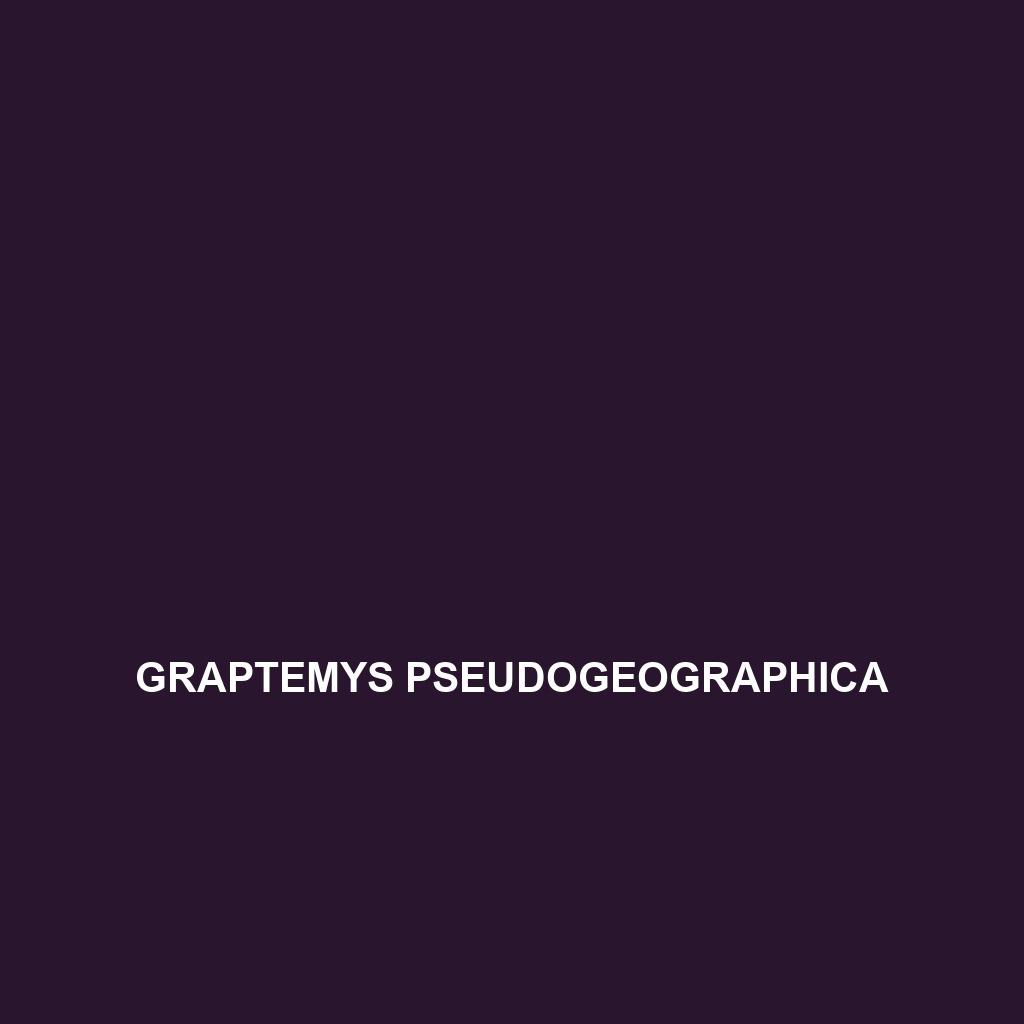Common Name
Graptemys pseudogeographica
Scientific Name
Graptemys pseudogeographica
Habitat
Graptemys pseudogeographica, commonly known as the False Map Turtle, is primarily found in the freshwater habitats of the central and southern United States. These turtles are commonly encountered in rivers, lakes, and ponds typically enriched with aquatic vegetation. They thrive in warm climates often situated in temperate forests and savannas. The water quality is crucial, as they prefer clean, slow-moving waters with abundant basking sites such as submerged logs and rocks. Due to their preference for certain environmental conditions, Graptemys pseudogeographica is a clear indicator of the health of freshwater ecosystems.
Physical Characteristics
The False Map Turtle showcases distinct physical characteristics that set it apart from other turtles. Adults typically range from 4 to 10 inches in carapace (shell) length, with females being larger than males. The shell exhibits a unique pattern resembling a map, featuring dark brown to olive hues adorned with yellow or light brown markings. This coloration provides effective camouflage against predators in their natural habitats. The species has a relatively elongate body shape and a flat carapace, which helps them navigate their aquatic environments efficiently. Moreover, their long necks and powerful limbs ensure adaptability and ease of movement in water.
Behavior
The behavior of Graptemys pseudogeographica is particularly fascinating. These turtles are primarily diurnal, engaging in activities during the day. They often bask on logs or rocks to regulate their body temperature and absorb sunlight. Social interactions can be observed during basking sessions, where individuals may gather in groups but showcase a pecking order. Unlike many other turtle species, Graptemys pseudogeographica exhibit territorial behaviors, especially among males during the mating season. During this time, males may perform intricate courtship displays, which include head bobbing and aggressive posturing to attract females.
Diet
Graptemys pseudogeographica is classified as an omnivore, demonstrating a diverse diet that primarily consists of aquatic invertebrates, mollusks, and some plant matter. Their feeding habits vary by age and habitat. Juveniles tend to consume more protein-rich diets, scavenging for insects and small fish, while adults may also incorporate algae and other plant materials into their meals. The diet of the False Map Turtle is crucial not only for their health but also for controlling the populations of various aquatic organisms and contributing to the overall balance of their ecosystems.
Reproduction
The reproductive cycle of Graptemys pseudogeographica typically occurs in the spring and early summer months. Mating occurs after females emerge from their hibernation. After mating, females will seek sandy or soft soil areas to lay their eggs, usually digging a nest to deposit 6 to 12 eggs. The eggs incubate for around two to three months, depending on environmental conditions, particularly temperature. Once hatched, the young turtles are independent and receive no parental care. This reproductive strategy ensures that multiple offspring can increase the chances of survival despite predation risks.
Conservation Status
As of the latest assessments, Graptemys pseudogeographica is currently classified as “Least Concern” by the International Union for Conservation of Nature (IUCN). Despite this status, they face threats from habitat loss, pollution, and human activity affecting freshwater ecosystems. Conservation efforts include habitat restoration and public awareness campaigns to promote the importance of protecting these environments. Local regulations also help mitigate human impact on their natural habitats, ensuring these turtles can thrive for future generations.
Interesting Facts
The False Map Turtle is known for its impressive long-life span, with many individuals living over 20 years in the wild. One of the fascinating adaptations of Graptemys pseudogeographica is its ability to withstand a wide range of environmental conditions and changes in water levels, thriving overnight during seasonal floods. Additionally, their unique shell markings can vary significantly between populations, making them a subject of interest for researchers studying evolutionary traits.
Role in Ecosystem
Graptemys pseudogeographica plays a significant role in its ecosystem. As both predator and prey, these turtles help regulate populations of aquatic invertebrates, balancing food webs in their habitats. By foraging on algae and vegetation, they contribute to maintaining the health of their environments, preventing overgrowth that can suffocate other aquatic life. Moreover, these turtles are vital in nutrient cycling within freshwater ecosystems, promoting biological diversity and ecological stability.
